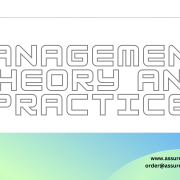Executive Summary
Winch-It Industries has planned to expand its business overseas and for this an effective HR strategy is important. The present report has highlighted that the organisation should go with a flat organisational structure which would help the organisation to make quick decisions and also allow the employees flexibility. The organization should implement a shared and adaptive cross-cultural management which would help the organisation have a communal environment and learn the lifestyle and culture of the foreign market allowing it to offer suitable products. The organization should go with an expatriate manager who is aware of the cultural differences and can communicate effectively with the local employees and consumers which would help the organization to settle down in the market.
Introduction
International expansion could be troublesome if a proper expansion strategy is not followed. International expansion is a vast concept and hence several key aspects are important to be taken into account to make the international expansion process a success. The HR department plays an important role in overseas expansion as it takes into account several key aspects for the smooth operation of the organization like staffing, development of organizational structure and culture, and also helps to analyze the effective management of performance shown by the employees of an organization. Since globalization provides unparalleled business opportunities to organizations, organizations to make sure International Human Resource planning is done effectively (Trąpczyński and Trąpczyński, 2016). Human resources plays a crucial role in developing a strong human resource plan which helps an organisation to face the imminent challenges that overseas markets are waiting with. Multinational companies focus on managing their HR effectively to eliminate potential staffing issues which would help to operate in the foreign market effectively. Winch-It Industries Pty Ltd is a light manufacturing industry that has planned to expand its business in the overseas market and the present report will discuss the key HR issues involved with international expansion which would help to address the objectives of the study.
The Organisational Context
Organizational structure is an important aspect of every organization and it becomes paramount when international expansion plans are developed. Organizational structure could be defined as the process of allocating tasks and jobs within the organization and developing a formal or informal reporting framework within the organization which would help to operate effectively in a market. The development of organizational structure is important for an organization as it will help to make a business strategy that would involve every organizational level effectively (Dickmann, Brewster, and Sparrow, 2016). Winch-It Industries has been able to operate in the Australian market effectively and is now planning to expand its business in the foreign market for which having an efficient organizational structure is imperative. The main focus of the organizational structure is to develop communication between the different levels of the organization. While developing a foreign expansion strategy organizational structure stands to be important as in a new market communication is the ultimate tool that can help create opportunities (Laforet, 2016).
An effective organizational structure could guide employees by laying down official reporting relationships that make every employee aware of their immediate leader and hence help to bring out effective insights from the leaders. The significance of organizational structure stays in the fact that it helps the employees to look up to someone above them to seek suggestions which is not possible in an informal structure. Organizational structure is extremely effective in positively influencing operations and efficiency. There are different forms of organizational structure like flat structures and tall structures. The flat structure is known for its lesser layers in the structure and reporting relationships. In this kind of structure, front-line employees could make a range of decisions and could easily get access to the leaders or the upper management. On the other hand, the tall structure is complicated and has more layers of management and access is not easy for the lower level employees (Laforet, 2017).
Winch-It Industries Pty Ltd has been able to operate effectively in Australia and hence to make international expansion the organization to adopt a suitable organizational structure. The needsorganization to be able to make suitable decisions while working in the foreign market and for that the needsorganization to provide flexibility to the employees to be able to make decisions. The tall structure is a structure where decisions are made through complex layers of management which could become problematic for the organization Winch-It in the initial days of foreign business. The organization needs to make decisions faster and there should be less experimentation done regarding decision-making. The foreign offices of Winch-It need to get easy access to the upper management of the organization and through a tall structure it will not be that easy hence the flat organizational structure is recommended for the organization. The flat organizational structure will help the front-line employees to make suitable decisions obviously with the support of the mid-level managers and in case there are any problems the mid-level managers would be able to connect with the upper management sitting in Australia, The flat structure should be adopted by the organization (Sparrow, Brewster and Chung, 2016).
Cultural Context
One of the major aspects that every organization will have to consider while expanding business operations in the overseas market is the cultural aspect. Culture could be defined as the acquired knowledge that people commonly use to interpret their personal experiences and behave as per the situations generally. The understanding of culture and the visible differences in culture is important for organizations to learn. Hence Winch-It needs to learn about the differences in culture which is only possible with the implementation of a suitable cross-cultural management (Huang and Zhu, 2016). In a potential new overseas venture culture could be the deciding factor and hence it is indispensable to have effective cross-cultural management in place for the organization Winch-It. Cross-cultural management could be defined as the process of managing teams and works effectively considering the cultural differences between the employees and among the regions. In the present case, the organization Winch-It should look toward understanding the culture of the employees working in the foreign operations of the organization (Cascio and Boudreau, 2016). In the present case, the organization should implement a shared and adaptive cross-cultural management. The shared and adaptive cross-cultural management will be effective in understanding the different cultural aspects of society and will help the management and the employees learn how to operate a business in a new environment. It could also be said that adaptive cross-cultural management is extremely effective in helping teams learn while working in a new overseas environment (Van Dyne and Ang, 2016). Hence it is recommended that Winch-It should follow a shared and adaptive cross-cultural management style.
The Staffing Context
Staffing is a key issue in an international expansion strategy. Staffing could be a complicated aspect that might require a lot of brainstorming but having the right kind of staffing in place for an overseas operation could just be the decision to help an organization reach the pinnacle of success. Winch-It should be prudent in its staffing strategy and should analyze the market environment effectively before making decisions final regarding recruitment and staffing. The company will face significant competition in the overseas market due to the emergence of companies from China and Japan and hence Winch-It should understand the importance of placing the right people in the right areas (Armstrong and Taylor, 2017). To run the business in the new market the company should implement experienced and a challenging character to operate the new business. The company should focus on placing an expatriate in the new market who understands the foreign culture well and knows how to respect it. The expatriate with effective process knowledge and cultural awareness would be a huge plus for the organization as it will eliminate the issue of miscommunication and issues regarding professional bonding. The company should look to recruit lower-level employees from the local region but should focus on implementing Australian managers with suitable cultural awareness which would help to manage the business properly (Wilton, 2016).
International Performance Management
Managing employee performance based on organizational needs and aims is a major job for international Human resource management. Even though the foreign employees understand their cost to the company it is the role of the HRM to analyze the performance of the employees and support them with valuable insights. For Winch-It this becomes an extremely important aspect to analyse the performance of the overseas employees and accordingly make business plans and strategies. While considering performance management for overseas operations the needs organization to understand what sort of performance appraisal should be implemented. Whether it should be a standard format of performance management or a customized setup for an overseas branch needs to be decided properly (Cania, 2016). The organization should address the aspect of uniformity in the performance management process which would help the organization to set parameters and attributes to make sure performance management is uniform and effective for all the offices of the organization. Hence it could be said that the organization Winch-It Industries Pty Ltd should address the issue of uniformity in managing performance and should answer the question by going with a standard format of performance management with the help of KPIs or going with a customized setup with specific attributes (Brewster, Mayrhofer and Smale, 2016).
Conclusion
The present study has discussed the key aspects of international Human resource management that are suitable for Winch-It which has helped to cover up the objectives of the study and complete the report.
References
Armstrong, M. and Taylor, S., 2017. Armstrong’s handbook of human resource management practice. Kogan Page Publishers.
Bach, S., 2016. International migration and HRM. International Human Resource Management: National Systems and Multinational Companies, p.293.
Bannò, M. and Sgobbi, F., 2016. Family business characteristics and the approach to HRM in overseas ventures. Journal of Small Business Management, 54(2), pp.640-658.
Brewster, C., Mayrhofer, W. and Smale, A., 2016. Crossing the streams: HRM in multinational enterprises and comparative HRM. Human Resource Management Review, 26(4), pp.285-297.
Cania, L., 2016. The impact of strategic human resource management on organizational performance.
Cascio, W.F. and Boudreau, J.W., 2016. The search for global competence: From international HR to talent management. Journal of World Business, 51(1), pp.103-114.
Dickmann, M., Brewster, C. and Sparrow, P. eds., 2016. International Human Resource Management: Contemporary HR Issues in Europe. Routledge.
Huang, X. and Zhu, Y., 2016. Cross-Cultural Management and HRM. In Managing Chinese Outward Foreign Direct Investment (pp. 122-139). Palgrave Macmillan UK.
Laforet, S., 2016. Effects of organizational culture on organizational innovation performance in family firms. Journal of Small Business and Enterprise Development, 23(2), pp.379-407.
Laforet, S., 2017. Effects of organizational culture on brand portfolio performance. Journal of Marketing Communications, 23(1), pp.92-110.
Sparrow, P., Brewster, C. and Chung, C., 2016. Globalizing human resource management. Routledge.
Trąpczyński, P. and Trąpczyński, P., 2016. De-internationalization: A review of empirical studies and implications for international business research. Baltic Journal of Management, 11(4), pp.350-379.
Van Dyne, L. and Ang, S., 2016. Cultural intelligence. Group and Organization Management, 31, pp.20-26.
Wilton, N., 2016. An introduction to human resource management. Sage.










